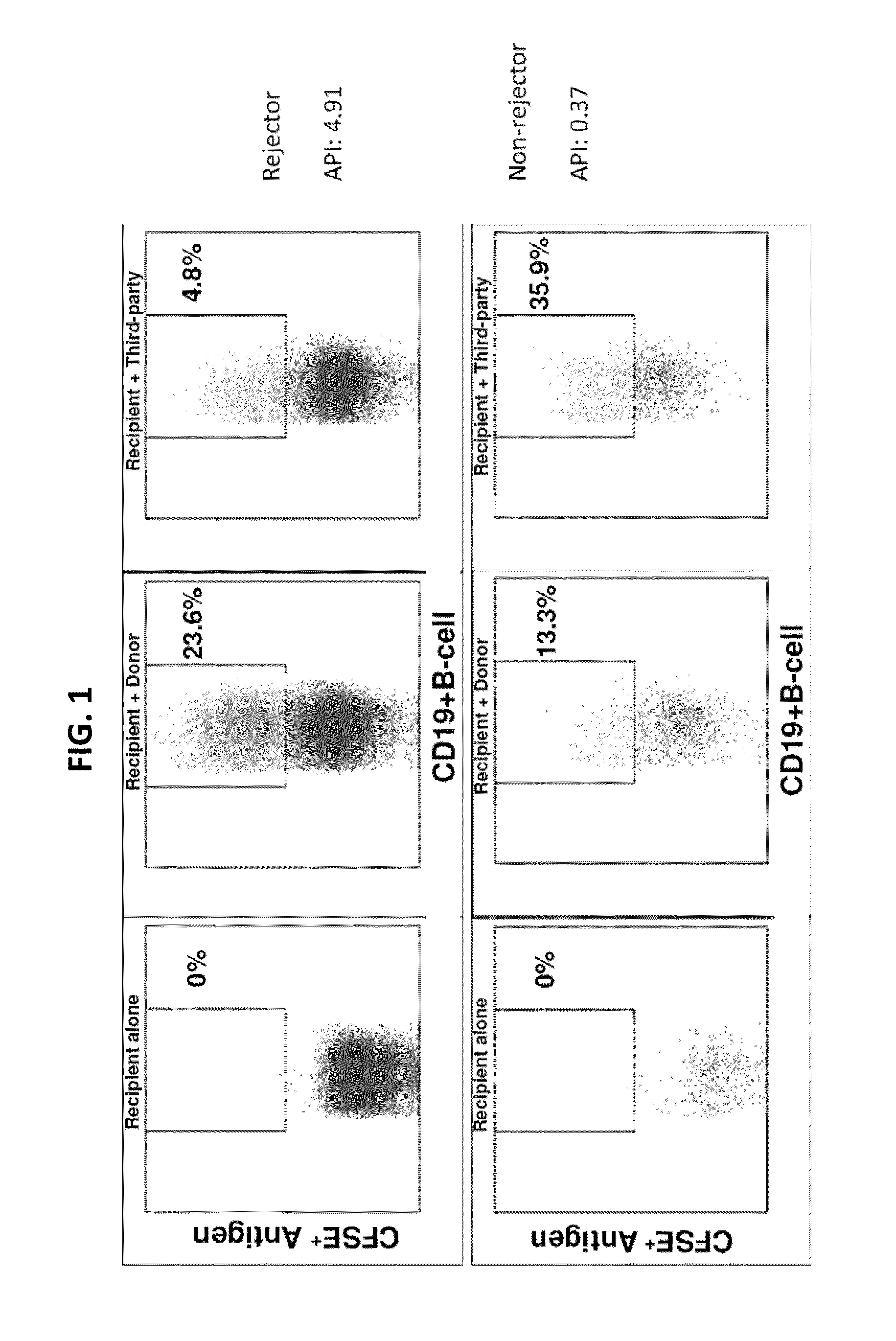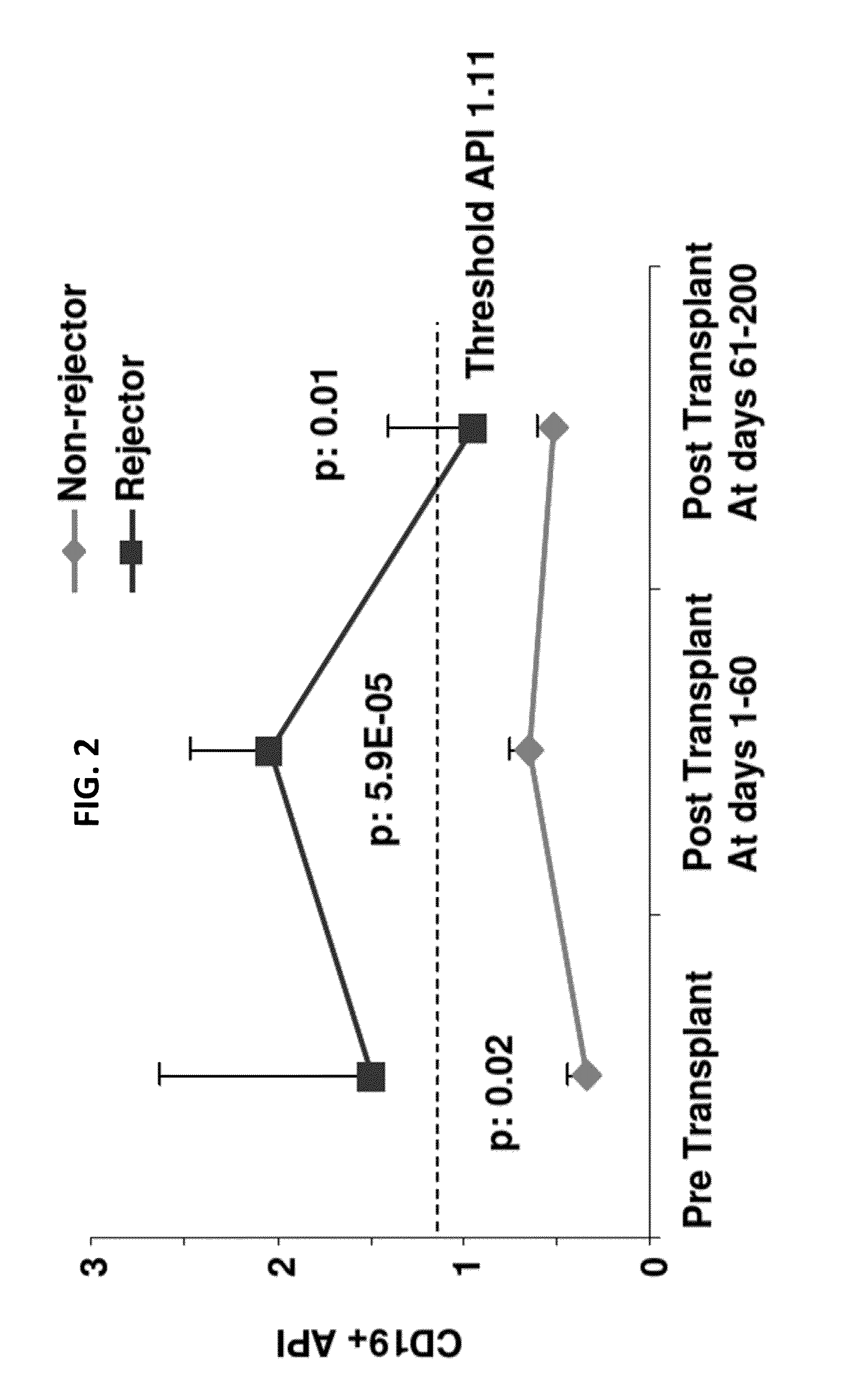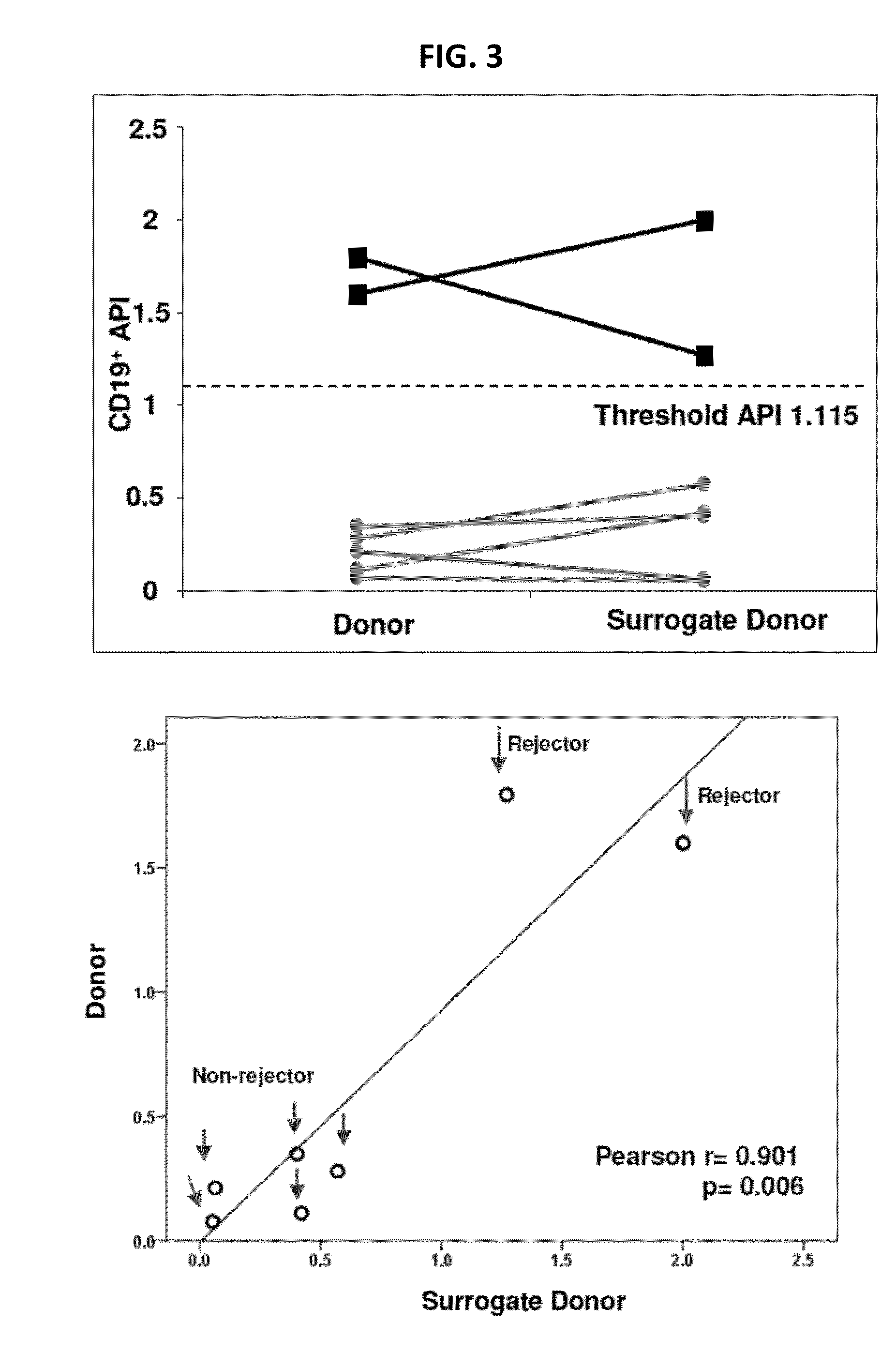Antigen presenting cell assay
a cell assay and antibody technology, applied in the field of immunology, can solve the problems of adverse post-transplant outcome, high pre-transplant pra in allograft recipients, and subsequent risk of early graft failure, and achieve the effect of increasing the risk of acute cellular rejection and/or humoral rejection
- Summary
- Abstract
- Description
- Claims
- Application Information
AI Technical Summary
Benefits of technology
Problems solved by technology
Method used
Image
Examples
example 1
B-Cell Rejection Monitoring Assay
[0157]This example discloses a B-cell rejection monitoring assay for identifying recipients at risk for ACR and HR.
[0158]In these data sets, the rejection-prone recipient was labeled “a Rejector” and the rejection-free recipient “a Non-Rejector.” Significantly higher API distinguished without overlap (100% sensitivity and specificity) children who had biopsy-proven rejection (Rejectors) after liver (LTx) or small bowel transplantation (SBTx), from those who were rejection-free (Non-Rejectors). (Table 1).
TABLE 1LTxAPI (Median ± SEM)SBTxAPI (Median ± SEM)NR n = 200.750 ± 0.048NR n = 180.555 ± 0.060R n = 151.794 ± 0.506R n = 111.781 ± 0.255p-value0.0030p-value0.0003
[0159]Additional data showed that various types of transplant recipients showed similar results. For example, similar results were observed in all B-cell compartments except the IgG+ compartment. These subsets, excluding IgG+ subsets are defined by the presence or absence of CD27, IgM, IgA, I...
example 2
Organ Transplant Monitoring Assay
[0165]This example discloses an assay for identifying recipients at risk for ACR and HR in which it provides the following indications: (1) analysis of B-cells which take up donor antigen; (2) characterization of the B-cell alloresponse (e.g., whether inflammatory or anti-inflammatory); and characterization of the T-cytotoxic memory cell alloresponse (e.g., whether inflammatory or anti-inflammatory).
[0166]The API of B-cells, its naive and memory compartments, and the resulting production of CD154 and CTLA4 in T- and B-cells, which are described in Example 1 are all combined into a single 6-8 hour test, in which dye-labeled donor and third-party antigen act as stimulators. Polychromatic flow cytometry is used to measure B-cell antigen presentation, and B- and T-cell inflammatory or anti-inflammatory alloresponse simultaneously. This combined assay provides a comprehensive analysis of B-cells which take up donor antigen, the character of the B-cell all...
example 3
B-Cell Antigen Presentation Assay
[0167]The example provides a B-cell antigen-presentation assay for detecting risk of rejection in subjects with a transplanted organ.
[0168]Assay System:
[0169]Lymphocytes obtained from a transplant recipient were mixed with donor antigen or with third-party antigen. Third-party antigen included antigen from an individual who is antigenically dissimilar to the recipient or the donor. Antigenic similarity or dissimilarity was determined at the HLA loci. These histocompatibility loci included the major class I (e.g., HLA-A, -B and -C) and class II (e.g. HLA-DR, -DP, -DQ, -DOA, -DOB and -DM) loci. If actual donor antigen was not available, antigen from normal human subjects which was matched with actual donor at the HLA loci was used. The ratio of donor antigen to third-party antigen uptake and presentation was the API. If the donor antigen presentation exceeded that due to third-party, the API was usually >1 and the individual was at increased risk of re...
PUM
| Property | Measurement | Unit |
|---|---|---|
| time period | aaaaa | aaaaa |
| fluorescent | aaaaa | aaaaa |
| time | aaaaa | aaaaa |
Abstract
Description
Claims
Application Information
 Login to View More
Login to View More - R&D
- Intellectual Property
- Life Sciences
- Materials
- Tech Scout
- Unparalleled Data Quality
- Higher Quality Content
- 60% Fewer Hallucinations
Browse by: Latest US Patents, China's latest patents, Technical Efficacy Thesaurus, Application Domain, Technology Topic, Popular Technical Reports.
© 2025 PatSnap. All rights reserved.Legal|Privacy policy|Modern Slavery Act Transparency Statement|Sitemap|About US| Contact US: help@patsnap.com



